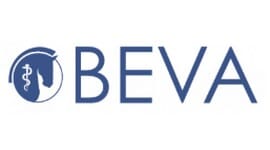
One of the most rewarding aspects of the veterinary profession for me is the role we play in shaping each other’s career pathways. I have always been passionate about the role education plays in day-to-day work, whether it be informing clients of a specific disease and its treatment or management, sharing our skills, knowledge and experiences within the workplace, or more literally by direct teaching of undergraduates, student veterinary nurses and graduates progressing in their already established careers.
The importance of intramural rotations
With RCVS guidance stipulating that 70 percent of a vet student’s clinical experience must be gained from first opinion practice, an increasing number of universities are building partnerships with veterinary practices to provide this. Outsourcing intramural rotations (IMR) placements does indeed provide a genuinely authentic experience of clinical practice first-hand; however, we should be mindful that this includes the good, the bad and the ugly, and the impact this may have along the way.
I consider myself fortunate to have been the student placement lead in more than one practice, for more than one university. Along with that comes the privilege of receiving additional teaching training, which might not otherwise have come my way. Learning how to teach is possibly one of the most humbling experiences I have had; my only wish is to have the capacity to carve an extra few hours into each (already jam-packed) day to learn how to do it better.
A particularly sobering moment happened not long ago during a feedback session. Typically, a check-in and feedback session is done halfway through the IMR placement, with a full appraisal at the end. The session started in the usual way, with a casual enquiry about how the student was finding the placement. I was pleased to hear positive feedback, especially given that this particular person had limited equine experience and, by their admission, was very nervous at the start. So, what was my cause for concern? The bar we had to reach to achieve a positive experience was so very low: the student reported that we were the first placement provider to remember their name throughout the rotation!
Balancing workplace learning
Even with the most invested teams, the grind of day-to-day practice and outside life overspill, often leaving placement leaders juggling where the student is best placed that day
Universities put huge efforts into providing support for partner practices, with team liaisons and both mandatory and additional elective online CPD, along with yearly conferences. Being affiliated with a university is an enriching experience, but this doesn’t get away from the fact that not all vets in practice want to teach; others may want to but don’t have the capacity to do so, while others become hugely passionate about teaching in the clinical setting.
There is no doubt that being an IMR placement provider, as well as taking students on extramural study (EMS) placements, adds to the workload of the practice: more admin, more time required per call, more conversations to have in the car to and from calls, and so on. As staff inevitably turn over, shifts in engagement in teaching happen. Even with the most invested teams, the grind of day-to-day practice and outside life overspill, often leaving placement leaders juggling where the student is best placed that day.
The veterinary curriculum, whether for veterinary surgeons or nurses, comprises both formal and informal curricula. Typically, most formal learning is done by the primary education provider, ie at the relevant university or college. Workplace learning (WPL) is commonly assessed in areas falling under the formal curriculum, but predominantly delivers informal, unscripted learning opportunities. These are caseload dependent and different for each student. While learning objectives may meet outcomes embedded in the formal curriculum, the individual experience is hugely varied.
The hidden curriculum
A third lesser-known but hugely impactful curriculum exists, however: the hidden curriculum. Well documented in literature, this can be defined as the “tacit, subconscious learning that is usually unrecognised by both student and teacher” (Mossop, 2017). In simple terms, what we say, how we say it and our attitudes or workplace cultures have a huge impact on the learning experience. Perhaps not rocket science, but the evidence is both convincing and repeatable.
“Incivility kills”. This phrase is gathering momentum in practice, used to raise awareness of the reaching effect of thoughtless dialogue and to support better workplace cultures. Treating each other with respect and civility is only one part of the puzzle in WPL. The language used and attitudes exhibited shape student behaviours and beliefs, and may wittingly or unwittingly undermine the messages of the formal curriculum (Hafferty, 1998; Roder and May, 2017).
Students in their later years of study exhibit declining levels of empathy for animals, rating them as having lower levels of sentience, and express a reduced commitment to animal welfare
Unrecognised and unchecked, over time the hidden curriculum has been shown to impact ethical decision making, reduce empathy and impact professionalism (Baldwin et al., 1998; Lempp and Seale, 2004; Gofton and Regehr, 2006; Mahood, 2011; Hojat et al., 2004). Perhaps even more alarmingly, students in their later years of study exhibit declining levels of empathy for animals, rating them as having lower levels of sentience, and express a reduced commitment to animal welfare (Paul and Podberscek, 2000; Pollard-Williams et al., 2014; Larkin, 2017). In a population of high achievers, success has become unconsciously biased towards technical competence. Roder and May (2017) describe this as the primary message from the hidden curriculum, over and at the expense of all other aspects of the professional role.
The importance of language
Yet the future is far from doom and gloom. By having an increased awareness of the hidden curriculum and the impact it has, role modelling can be adapted to reinforce ethical and professional behaviours, build resilience and promote a welfare-led approach to clinical case management. When seeking role models, students not only seek out those exhibiting characteristics they deem important, but consistently mention enthusiasm, calmness and approachability (Roder and May, 2017).
Referring to an animal as “it” creates a disconnect, lowering the perceived level of sentience; describing aversive animal behaviours using derogatory language reflects a lack of awareness of stress or fear. Furthermore, while “gallows humour” is a common coping mechanism to combat the ongoing interaction with death and the dying, it may have a strong impact on developing professionals (Piemonte, 2015).
When seeking role models, students not only seek out those exhibiting characteristics they deem important, but consistently mention enthusiasm, calmness and approachability
Exploring why an animal may be expressing aversive behaviours, what signs of stress or fear look like in our patients and why they are present, and demonstrating positive strategies to deliver lower stress or fear are just a few of the achievable ways we can address the “naughty or difficult animal”. Discussing ethically, morally or emotionally challenging cases with peers and students encourages open reflection and acknowledges how tough the job is without fear of recrimination or ridicule.
Personally, I like to actively encourage students to give us as much feedback as we give them. Rarely do clinicians receive active feedback on their consultation skills, so I welcome any opportunity to hear back from students. It’s a chest-puffing moment to hear the sentence starting with “I really liked it when you said/did…”.
Language matters. My student went on to share this with me: “Remembering my name shows you cared enough to listen. It shows I matter.”









